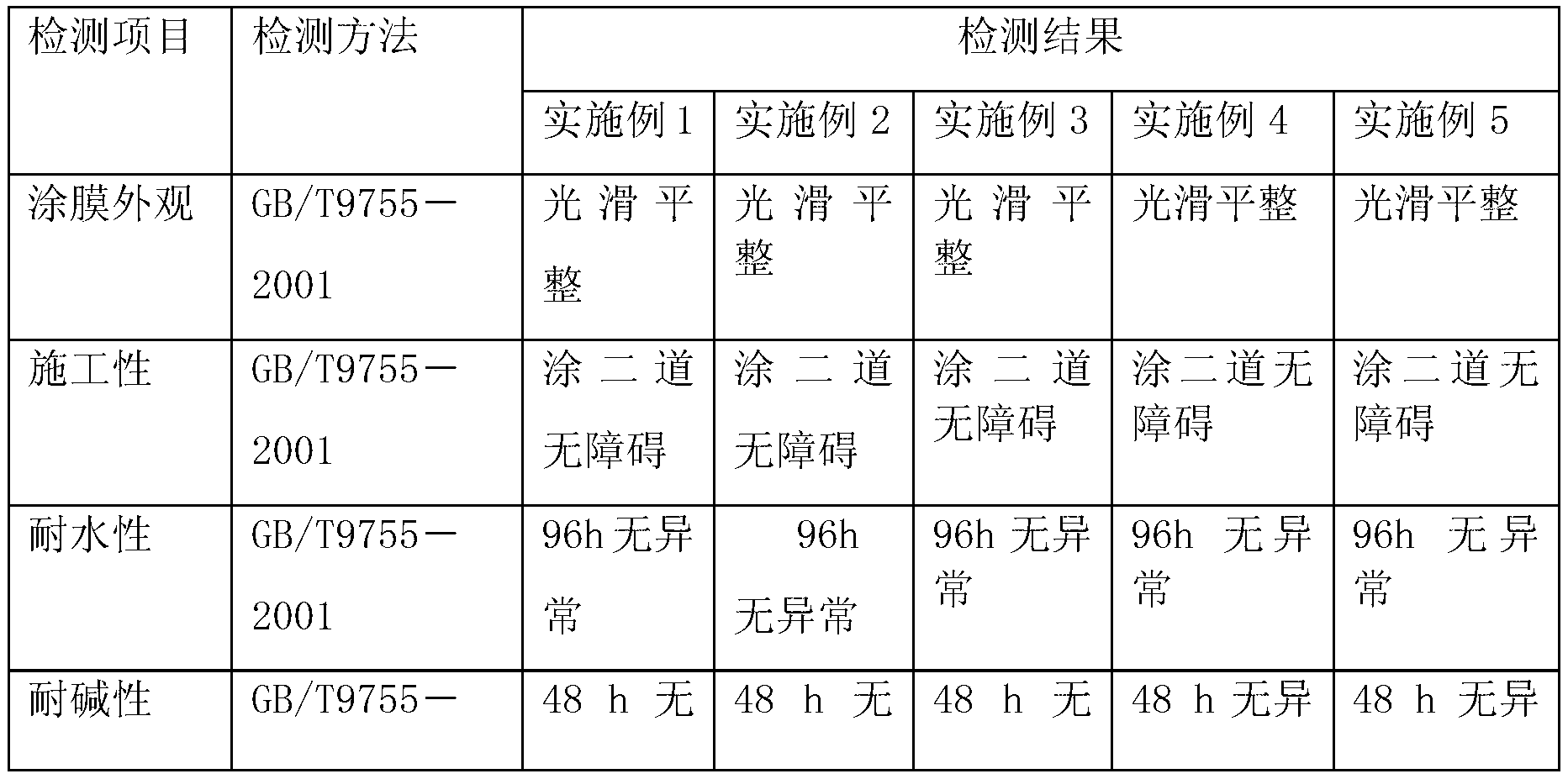PVDF varnish, heat-insulation energy-saving fluorocarbon paint, and preparation methods thereof
A fluorocarbon coating, energy-saving technology, applied in the direction of reflection/signal coatings, coatings, etc., can solve the problems of inability to achieve heat insulation and heat preservation, and achieve the effects of improving the working and living environment, excellent heat insulation effect, and good overall performance
- Summary
- Abstract
- Description
- Claims
- Application Information
AI Technical Summary
Problems solved by technology
Method used
Image
Examples
Embodiment 1
[0025] 1. Preparation of PVDF varnish
[0026] Weigh each component (parts by weight) according to the following formula: 30 parts of polyvinylidene fluoride, 10 parts of polymethyl methacrylate, 7.5 parts of propylene glycol methyl ether acetate, 17.5 parts of isophorone, 25 parts of titanium dioxide, 10 parts xylene.
[0027] Prepare PVDF varnish as follows:
[0028] (1) Add isophorone into a container with an ice-water bath, stir at a speed of 1500-1700rpm, and at the same time add polyvinylidene fluoride at a uniform speed at a speed of about 50-60g / min; add polyvinylidene fluoride After the completion, stop stirring, let stand for 20 minutes, start again and stir at 2500-2700rpm for 40 minutes to obtain PVDF resin dispersion;
[0029] (2) Pre-disperse polymethyl methacrylate, titanium dioxide, xylene, and propylene glycol methyl ether acetate evenly with a high-speed disperser to obtain a paint paste;
[0030] (3) Mix the dispersed PVDF resin dispersion liquid and pain...
Embodiment 2
[0035] This example is basically the same as Example 1, the difference is that when preparing heat-insulating and energy-saving fluorocarbon coatings, the components (parts by weight) are weighed according to the following formula: 45 parts of PVDF varnish, 30 parts of pigments and fillers, 24 parts of isophorone, 1 part of dispersant silane coupling agent (KH570). Among them, the pigment and filler are mixed with nano-scale ATO (radiation type), hollow glass microspheres (reflection type), and closed-cell perlite (barrier type) according to the mass ratio of 2:12:16.
Embodiment 3
[0037] 1. Preparation of PVDF varnish
[0038]Weigh each component (parts by weight) according to the following formula: 35 parts of polyvinylidene fluoride, 10 parts of polymethyl methacrylate, 10 parts of propylene glycol methyl ether acetate, 15 parts of isophorone, 15 parts of titanium dioxide, 15 parts xylene.
[0039] Prepare PVDF varnish as follows:
[0040] (1) Add isophorone into a container with an ice-water bath, stir at a speed of 1500-1700rpm, and at the same time add polyvinylidene fluoride at a uniform speed at a speed of about 50-60g / min; add polyvinylidene fluoride After the completion, stop stirring, let stand for 20 minutes, start again and stir at 2500-2700rpm for 40 minutes to obtain PVDF resin dispersion;
[0041] (2) Pre-disperse polymethyl methacrylate, titanium dioxide, xylene, and propylene glycol methyl ether acetate evenly with a high-speed disperser to obtain a paint paste;
[0042] (3) Mix the dispersed PVDF resin dispersion liquid and paint ba...
PUM
 Login to View More
Login to View More Abstract
Description
Claims
Application Information
 Login to View More
Login to View More - R&D
- Intellectual Property
- Life Sciences
- Materials
- Tech Scout
- Unparalleled Data Quality
- Higher Quality Content
- 60% Fewer Hallucinations
Browse by: Latest US Patents, China's latest patents, Technical Efficacy Thesaurus, Application Domain, Technology Topic, Popular Technical Reports.
© 2025 PatSnap. All rights reserved.Legal|Privacy policy|Modern Slavery Act Transparency Statement|Sitemap|About US| Contact US: help@patsnap.com


